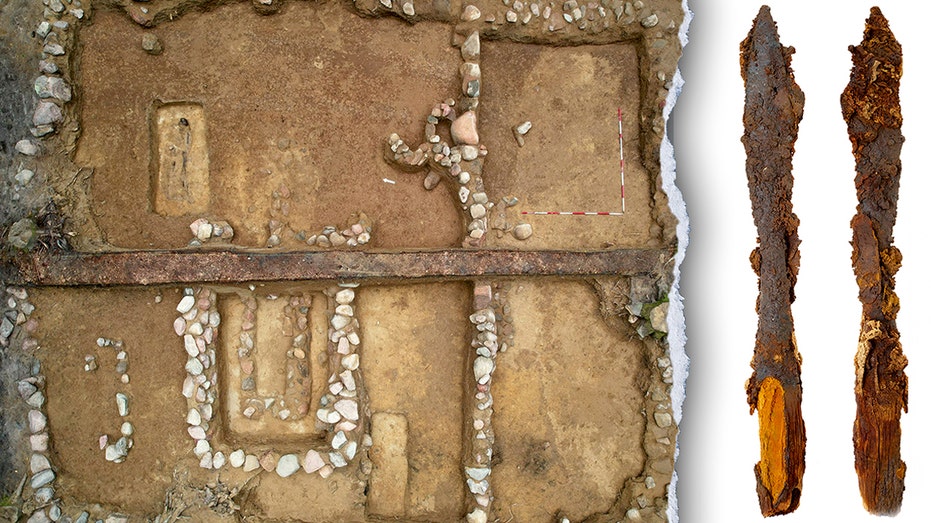Surprised archaeologists unearth ancient graves caught between pagan, Christian rituals in Poland
Archaeologists in Central Europerecently uncovered an ancient grave reopened not by modern looters but by medieval Poles over 1,000 years ago.The excavation took place at the Nowy Chorw cemetery in northern Poland. The findings were published in the journal Antiquity on June 23.Known as Grave 7, the 11th-century burial appeared to belong to an elite individual. It still contained high-quality artifacts, including a yew wood bucket with iron fittings.MEDIEVAL KNIGHT'S TOMB DISCOVERED BENEATH FORMER ICE CREAM PARLOR IN POLAND: 'VERY RARE'Sawomir Wadyl, an archaeologist at the University of Warsaw, told Fox News Digital that "nearly everything about this project has been surprising."An iron spearhead with preserved textile fragments was also found possibly remnants of a banner or ceremonial flag known as a standard."We had little precedent to guide our expectations, and what we found exceeded them," Wadyl also said.Archaeologists found that some graves were reopened within a generation, with cremated remains laid directly over emptied burials likely part of ritual reuse rather than robbery."It wasnt a case of medieval or modern looters stumbling upon an ancient grave centuries later," Wadyl noted.VIKING-ERA BURIAL SITE WITH ELITE FAMILY TREASURES AND GIFTS DISCOVERED, PLUS AN 'UNUSUAL CASKET'"It was part of unfolding local history."The archaeologist said that reopening graves was common in the 11th century, but that it "wasn't always about stealing valuables.""Sometimes graves were disturbed to remove objects, possibly for reuse, ritual reasons, or even as acts of social or religious rejection," Wadyl observed."In other cases - like at Nowy Chorw - the bodies themselves were exhumed and cremated after burial, suggesting a deeper ritual significance."He added, "This may have been done to 'correct' burial practices as beliefs changed, or to assist the deceased in reaching the afterlife."CLICK HERE TO SIGN UP FOR OUR LIFESTYLE NEWSLETTERThe burials incorporated both Christian and pagan rituals, shedding new insights on a time of dramatic transition in European history.Wadyl noted that while the eastwest grave orientation and modest grave goods suggest Christian influence, the bodies were aligned with their heads, not feet, to the east an unusual detail.Features like cremation, symbolic grave markers and stone constructions point to pagan traditions.This blending of beliefs, Wadyl said, was "one of the most fascinating aspects of this project.""In short, these were not fully Christian or fully pagan burials," he said. "They represent a blended, transitional funerary tradition, which is why this cemetery is so significant."He added, "Its about a community living through a time of profound change - the shift from pagan to Christian belief, from tribal structures to early states, from old traditions to new identities."For more Lifestyle articles, visit foxnews.com/lifestyleNext steps include DNA analysis to identify kinship patterns, Wadyl said as well as "looking deeper into the blend of Christian and pre-Christian ritual practices." He and his team also identified more than 120 similar grave sites across Pomerania, thanks to LiDAR mapping opening the door to further study."This discovery reminds us that history isn't always neat," Wadyl concluded."The past is full of negotiation, resistance and adaptation.""For us, it's a chance to give voice to those long-forgotten people, and to better understand how cultural transformation really happens."




